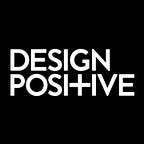Does Your Logo Need Updating?
With the dawn of the internet came new expectations for the versatility of logos. Since then, that versatility has grown, and will continue to develop rapidly. It’s essential that your logo design supports different formats, colors, ADA standards, and resonates with your audience.
There are many reasons you might consider updating your logo:
· It’s not as memorable as your competitors’ logos
· It no longer meets size requirements in a digital space
· Your audience has changed but your logo hasn’t
· It doesn’t look good when small
· You don’t have a high-resolution version of it
· It’s too complex, not simple enough
· It looks dated
· It doesn’t meet with today’s accessibility guidelines
Just like your brand style guides are living documents, so too is your logo. We see some hesitation to do a logo redesign from established brands, and we get it. But consider a logo refresh that keeps the main elements of your logo but enables you to attract new customers and revenue. You’ll need to continuously evolve your brand to ensure you’re connecting with consumer needs.
Your Logo Design Has to be as Simple as Black or White
Most logos feature primary and secondary colors. Sometimes you’ll even see tertiary and accent colors used to support the brand. But no matter what colors you use in your logo, you need to make sure that it looks good in all black or all white without losing essential elements.
You’ll find all black or all white logo versions are especially helpful for placing on giveaway items in a smaller format, such as on the side of a flash drive for an expo. Or you might sponsor an event where all sponsor logos are in black and white.
While you might not see an applicable need for a black or white logo currently, you should still design your logo to ensure your ability to make an all-white or all-black version.
Horizontal and Vertical Logo Versions
As your logo design team builds out your logo to match your company’s character and style, make sure you can format it in horizontal and vertical editions. Depending on where you use your logo, you might find it difficult to create only one format for all uses.
The only exception is if your logo is round or square. In that case, you might be able to get by with one version of your logo design. Think Apple, Starbucks, Home Depot, CBS, American Express, AT&T, Gap, GE, GM, Lego, Target, etc.
A Design Positive tip we like to share with new companies is to think about a typography logo instead of an icon logo. Since you don’t have much brand recognition yet, it will be easier for consumers to ascertain what you do when the words of your logo tell them.
Logo Design Accessibility and Contrast Ratios
Another aspect of your logo design that you should consider is its accessibility. Individuals who are color blind or have low vision might not be able to see your logo if the color contrast ratio is too low. Not only that but logos with a low contrast ratio also risk having poor print outcomes because there simply isn’t enough variation between colors.
The best way to know if your logo meets accessibility standards is if your main elements have at least a 4.5-to-1 ratio. Using this online contrast ratio, we can tell that yellow would have a 1.07 ratio on a white background, which means it doesn’t meet accessibility standards. Green, however, has a 5.13 contrast ratio with white, so it’s a good color to use for your logo.
It might be appropriate to have different versions of a color for different purposes. For example, you might use one shade of green for ornamentation on your website and a slightly darker green for text to ensure those who have low vision can see your on-page text. You might be surprised how a slight change in the shade of the color is not apparent to the viewer but makes for better legibility.
As you consider the accessibility of your logo and brand colors, also realize that the amount of white space around an element can affect how the eye perceives that color. For example, yellow, which is not a very accessibility-friendly color, would of course look darker next to navy than it would when surrounded by white space.
We now include an accessibility page in all brand style guidelines. It includes information on adding filters to photos you plan to put text over to ensure readability, special colors for online elements, and how to double check your work so you can be assured accessibility compliance is achieved.
Clarity and Integrity When Smaller
Finally, it’s crucial that your logo keeps its integrity and is still clear when you shrink it down to a smaller size. Logos with intricate details tend to not do as well in smaller dimensions. Some modern logo redesigns are driven by this need to simplify.
For example, the Instagram logo redesign took the semi-streamlined image of a polaroid camera and made it much more abstract to remove the small details. This way, the logo would be recognizable on even the tiniest of uses.
Companies that choose to include their tagline in their logo need to have guidelines for minimum size requirements. That way, you ensure that the tagline is always legible. And, have a version of your logo without the tagline that you use for even smaller logo versions.
With some minor tweaks, your logo could meet all these design requirements.
From the Design Positive team, we hope this branding exercise was helpful for you. We’re passionate about branding and love putting a strategy behind our work.
